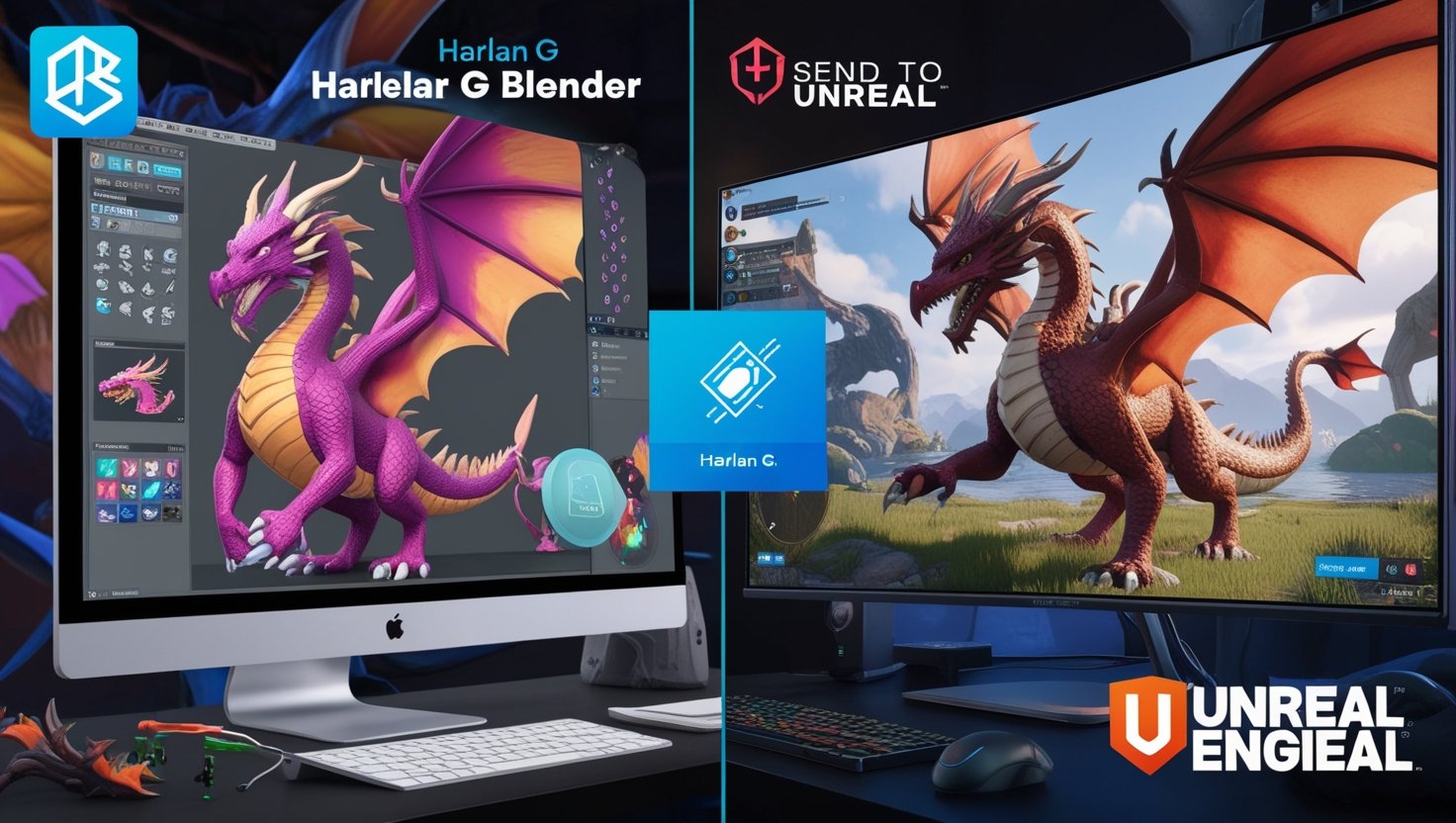
Introduction
In the ever-evolving world of 3D graphics and game design, Harlan G Blender to Unreal has become a go-to workflow for many creators. If you’re working in Blender and want to bring your creations into Unreal Engine, you’ll need a seamless and efficient pipeline. This article covers all you need to know about Harlan G Blender to Unreal – with a few laughs and severe insights to keep it accurate. Whether new to 3D art or a seasoned developer, understanding the Harlan G Blender to Unreal process will simplify your work.
The Need for Harlan G Blender to Unreal Integration
Let’s clarify: moving assets from Blender to Unreal is not just about exporting models. It’s about maintaining quality, efficiency, and ease of use. Harlan G Blender to Unreal workflows ensure that what you create in Blender looks just as good in Unreal – without unnecessary hassle. Forget about losing textures or scaling issues; with Harlan G Blender to Unreal, you’re set for a smooth transition.
How Harlan G Blender to Unreal Streamlines Game Design
Imagine creating a stunning dragon in Blender – scales, animations, the whole shebang. Then you export it to Unreal, and suddenly, it’s a spaghetti monster. You can sidestep those nightmares thanks to the tools and methods designed in the Harlan G Blender to Unreal workflow. Harlan G Blender to Unreal provides peace of mind that your dragon remains a dragon by optimizing exports, setting up correct scaling, and managing animations.
Essential Tools for Harlan G Blender to Unreal Workflow
There are a few must-have tools for anyone diving into the Harlan G Blender to Unreal pipeline. Let’s talk about them!
- Send to Unreal: This nifty tool allows you to send static meshes, skeletal meshes, and animations directly from Blender to Unreal with a single click. It’s like the express lane of the Harlan G Blender to Unreal workflow.
- UEx Add-On: This one helps manage the object scaling issues. When you use UEx, objects retain their proportions in Unreal, which means less time spent adjusting every import.
- Blender to Unreal Add-On: This versatile tool can handle everything from automatic collisions to socket management and Level of Detail (LOD) creation. It’s the ultimate Harlan G Blender to Unreal solution for complex assets.
Making Sense of Harlan G Blender to Unreal’s Collisions and Sockets
One of the most excellent parts of the Harlan G Blender to Unreal setup is how it handles collisions and sockets. If you’ve ever added collision manually to each object in Unreal, you know it’s as fun as watching paint dry. Harlan Blender to Unreal add-ons can automatically assign basic collision types to your models, saving countless hours.
The Humor (and Serious Side) of Exporting with Harlan G Blender to Unreal
Let’s face it: exporting complex models can feel like a comedy of errors – until you find the Harlan Blender to Unreal method. These tools make the process so streamlined that even a monkey could do it… okay, maybe not a monkey, but certainly someone who’s never exported a model. On the serious side, this workflow has transformed pipelines for studios by minimizing errors, saving time, and enabling artists to focus on what matters: creativity.
Avoiding Common Pitfalls in Harlan G Blender to Unreal
While the Harlan Blender to Unreal pipeline is designed to simplify things, a few things could be improved. Always double-check your scale settings and UV maps before exporting. Harlan Blender to Unreal tools are powerful but can’t fix a messy UV map. Consider this your “checklist of doom” before clicking export!
Harlan G Blender to Unreal for Realistic Scenes
For creators working on realistic scenes, Harlan Blender to Unreal ensures assets look photorealistic in Unreal Engine. With suitable materials, textures, and lighting adjustments, your Blender model can look incredible in Unreal. Say goodbye to the mismatch in lighting or materials that many artists struggle with when switching between software.
How Harlan G Blender to Unreal Keeps Your File Sizes Manageable
File size matters in game development – a lot! The Harlan Blender to Unreal workflow enables you to use LODs and optimized meshes so that your game’s file size doesn’t balloon out of control. When your file size is too big, loading times skyrocket, and Harlan Blender to Unreal workflows help keep everything efficient.
Why Animations Shine with Harlan G Blender to Unreal
If you’re creating animations in Blender, you’ll appreciate how well they transfer in the Harlan G Blender to the Unreal pipeline. These tools support bones and rigging data so your animations maintain their original timing and finesse. No more wobbly legs or floating arms!
Setting Up Lights and Cameras in Harlan G Blender to Unreal
Lighting and cameras can make or break a scene. Luckily, Harlan Blender to Unreal supports the export of camera and light setups, allowing you to adjust focal lengths, depth of field, and lighting directly in Unreal without redoing it all from scratch.
Handling Textures and Materials in Harlan G Blender to Unreal
Materials often look different in Blender and Unreal due to the engines’ varied renderers. Harlan Blender to Unreal workflows ensures that textures and materials transfer with minimal tweaking, helping keep the look consistent across the software.
Conclusion
In conclusion, Harlan Blender to Unreal is the solution that 3D artists and developers need to make moving assets from Blender to Unreal Engine more efficient. These tools make the journey smoother, allowing you to focus on creating stunning visuals instead of wrestling with technical hurdles. Whether animating a character or designing a game level, Harlan G Blender to Unreal workflows ensure you enjoy every part of the process.


